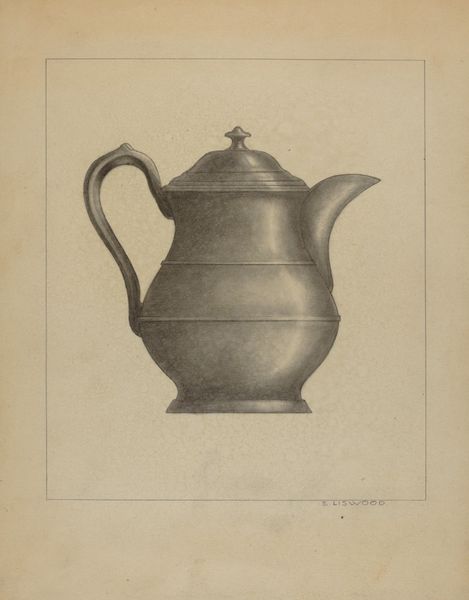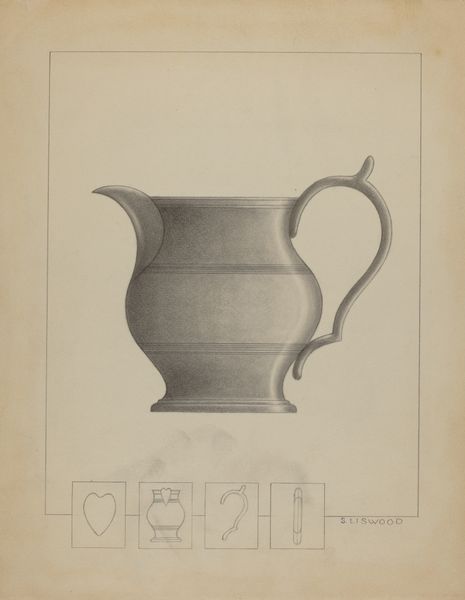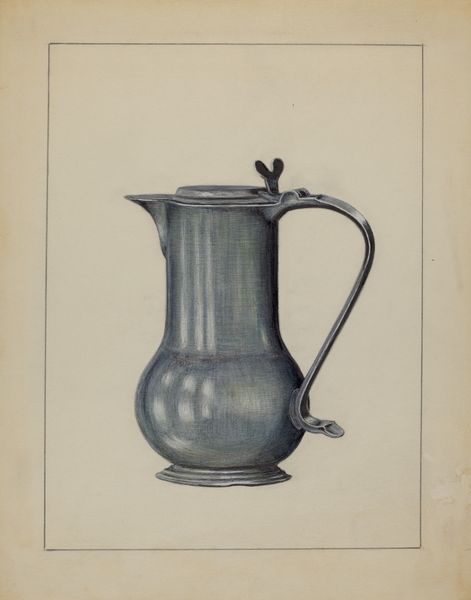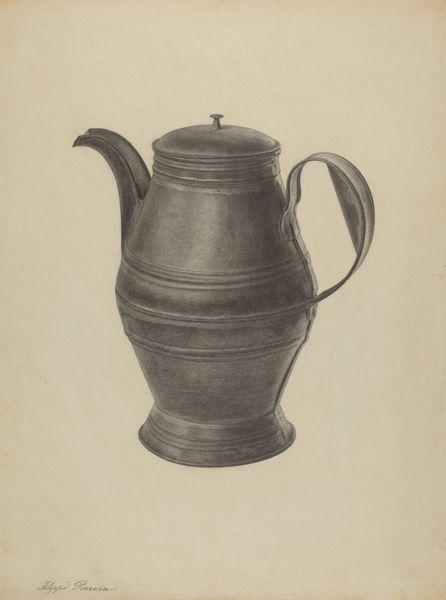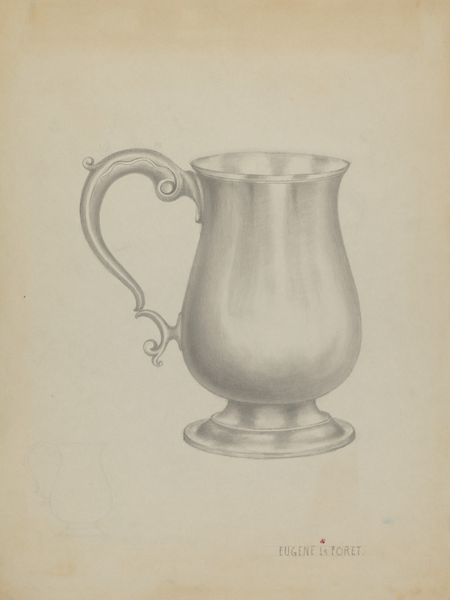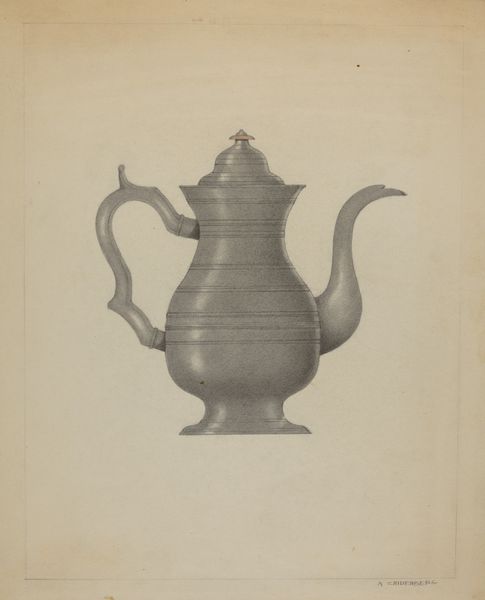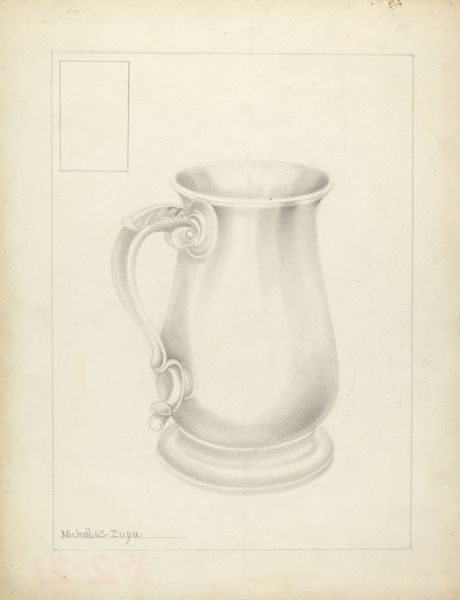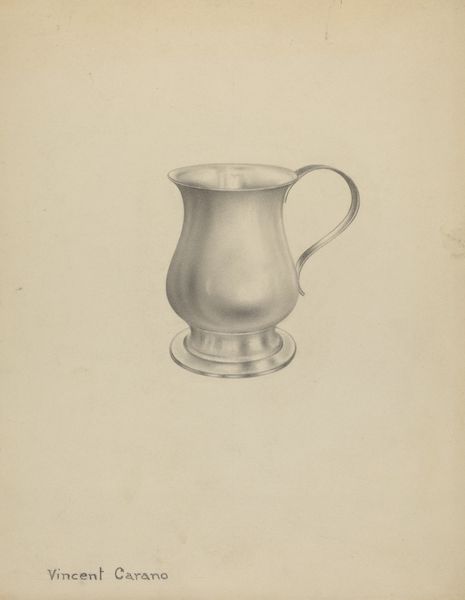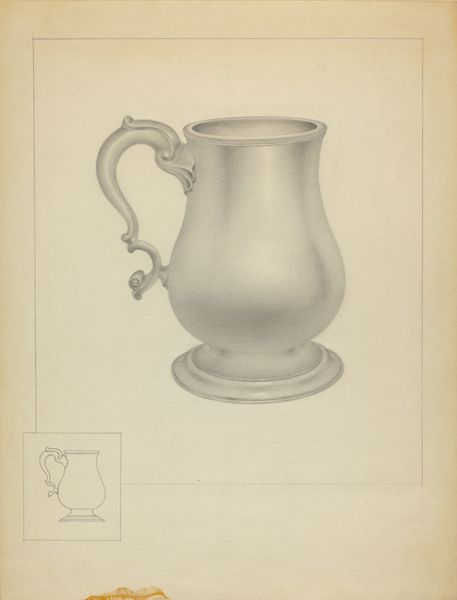
drawing, pencil, graphite
#
drawing
#
pencil drawing
#
pencil
#
graphite
Dimensions: overall: 30.8 x 22.9 cm (12 1/8 x 9 in.) Original IAD Object: 8" high
Copyright: National Gallery of Art: CC0 1.0
Editor: This is Joseph Wolins’ "Pewter Pitcher," a graphite and pencil drawing from around 1936. I'm immediately struck by how it captures the almost metallic quality of pewter, despite being rendered in such simple materials. What do you see in this piece beyond just the still life? Curator: What stands out to me is the choice of object, particularly during the 1930s. The pitcher, seemingly mundane, can be read as a symbol of domesticity and the roles assigned to women during that era, yet the artistic rendering elevates it, complicating its symbolism. How does its creation during the Depression era influence your interpretation? Editor: I hadn’t really thought about the Depression. Does the simplicity of the pitcher and its utilitarian nature speak to that time, maybe highlighting a focus on practicality over extravagance? Curator: Exactly! It prompts questions about class and access. Was Wolins subtly commenting on the limited resources and shifting societal values? It could be argued the choice of pewter, a relatively inexpensive material compared to silver, reinforces this reading. Also, consider who traditionally used pitchers: often, women. What does it say to focus on items typically found inside the house? Editor: So, by drawing it, is he highlighting the lives and labor of women that might otherwise be overlooked? Curator: Precisely! Art can function as a subtle form of activism. By immortalizing an everyday object, Wolins invites us to reconsider the lives of those who used it, particularly women, during a time of immense social and economic change. How do you feel, knowing this new information? Editor: It definitely makes me look at it differently! It’s more than just a pretty drawing; it's a social commentary. I'll never look at a still life the same way again. Curator: Excellent. This is why context matters. The more you understand the historical moment and its societal implications, the richer your interpretation will be.
Comments
No comments
Be the first to comment and join the conversation on the ultimate creative platform.
